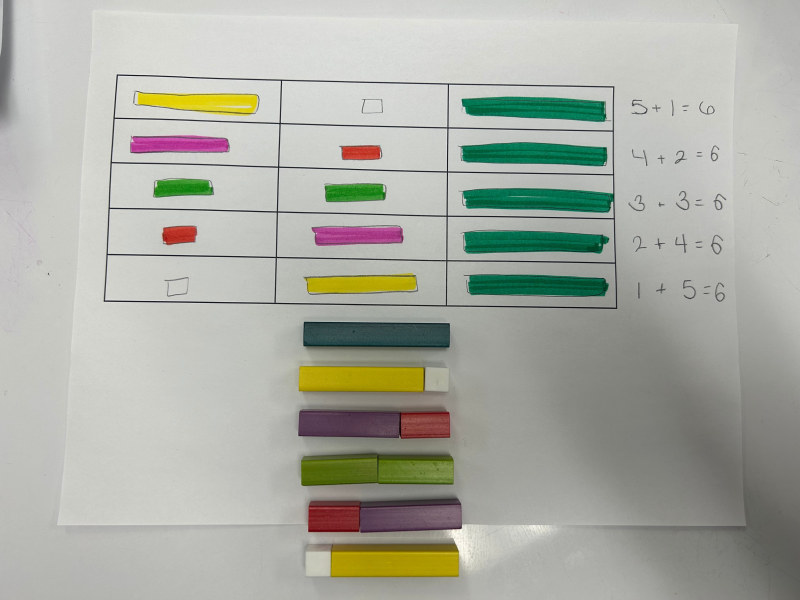C2.1 Identify when symbols are being used as variables, and describe how they are being used.
Activity 1: Rods
Using a set of relational rods, each team of two students:
- discover all possible combinations of rods to obtain a given length;
- assigns a value to each type of the coloured rod (for example, the white rod is worth 1, the red one is worth 2);
- represents the combinations by number sentences (for example, 4 + 2 = 6);
- replaces each number sentence with an equation that has a variable (or example, 1 + Δ = 6);
- asks another team to solve the equations using the rods.

Source: translated from Guide d’enseignement efficace des mathématiques de la maternelle à la 3e année, Modélisation et algèbre, Fascicule 2, Situations d'égalité, p. 60.
Activity 2: Identify Constant and Variable Quantities
Read the first statement in list A to the students. Then read them the one in list B.
Ask students to determine which quantity is constant and which is variable.
| List A | List B |
|---|---|
| Number of legs on a chair | Number of chairs in the house |
| Number of traffic lights in a city | Number of colours on a traffic light |
| Number of sweaters in a wardrobe | Number of sleeves on a sweater |
| Number of birds flying in the sky | Number of legs of a bird |
| Number of handles in a house | Number of handles on a door |
| Number of cars in the parking lot | Number of tires on a car |
Repeat the same exercise for the other statements in the lists.
Invite students to identify other constant and variable quantities in their daily lives.
